Japanese cuisine: Tasty, healthy and — yes! — cheap
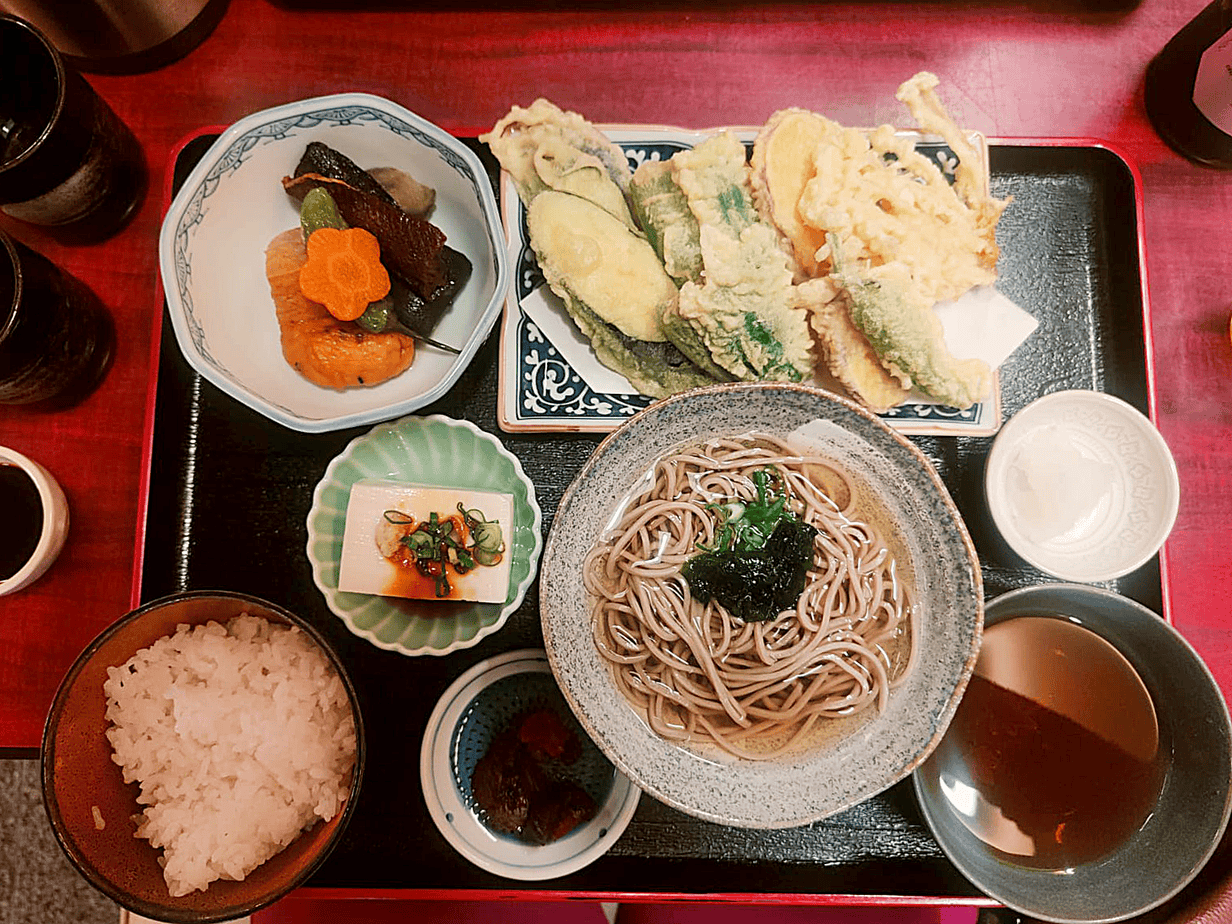
(This is the fifth of a six-part series on Japan and Shanghai.)
KYOTO, Japan – One of the reasons I travel is trying different foods in interesting environments. When I came to Japan three weeks ago, I pictured eating Japanese cuisine as sushi and steaming bowls of rice on tatami mats behind flowery Japanese panels. Instead, I found myself dining inside a concrete jungle.
A train station.
No. Call it a train station built inside a shopping mall. Kyoto Station is to train stations what NASA is to a science class. Kyoto Station is huge. It has so many tracks, platforms and train types, you must arrive earlier than you do at Middle East airports.
Besides train tracks, Kyoto Station is filled with department stores and min malls. Every time I entered I felt like I was in an American mall. And, of course, with every mall is a food court.
Kyoto Station’s food emporium, entitled Food Paradise, is on the 11th floor (Kyoto Station is 15 stories – yes, 15 – with three underground) and it came highly recommended by our hotel and Lonely Planet guidebook. I rolled my eyes. I’m in Japan and I’m dining in a place that may as well be in Des Moines?
When the elevator doors opened, however, this was no ordinary food court. Japan has no ordinary food scene. The floor was enormous but wasn’t filled with fast-food joints where you order at a counter. They were all individual restaurants, all beautifully decorated with brightly decorated paneling and white lanterns.
And they were packed.
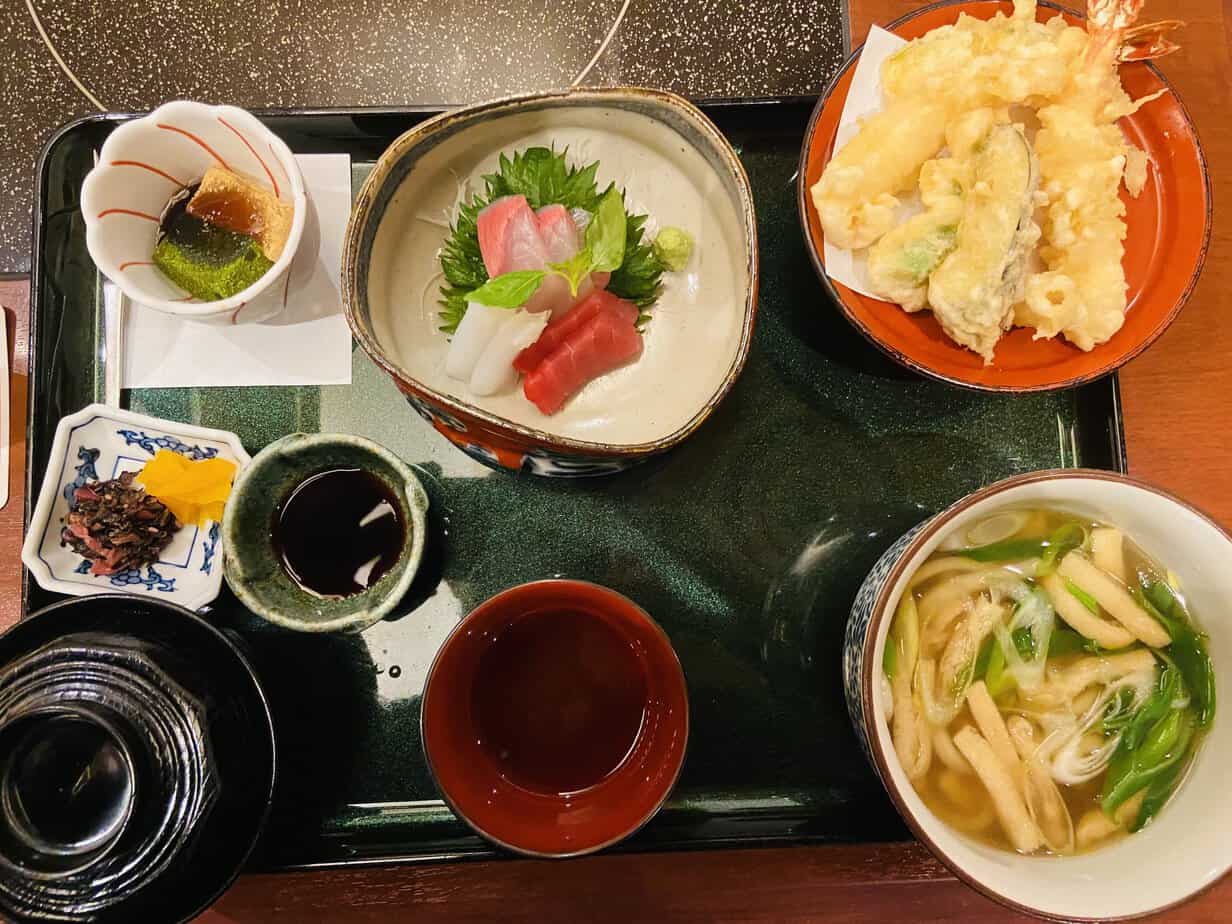
Everywhere we went, people sat patiently outside. Ladies in kimonos and masks would come out and yell a number, ushering more people inside. The customers were nearly all Japanese. The menus were all Japanese. This was no tourist trap, no Japanese-themed food circus. This was the real deal.
We sat outside a place called Mimiu, solely based on the shortest wait we could find. We were No. 16. Yet we were seated in 10 minutes. We ordered a set menu which for me was a seaweed appetizer, sashimi tempura, udon noodles, rice, Japanese pickles and a dessert. With a dab of the best soy sauce I’ve ever had, it was a great dining experience in a very weird environment.
And it was only €12.50.
Welcome to Japan where the food is cheap, tasty and healthy even if, as I found, a bit monotonous. After only five days, I grew tired of it. I started fantasizing about pasta amatriciana and wild boar cheeks grilled in a pan.
But I probably extended my life.
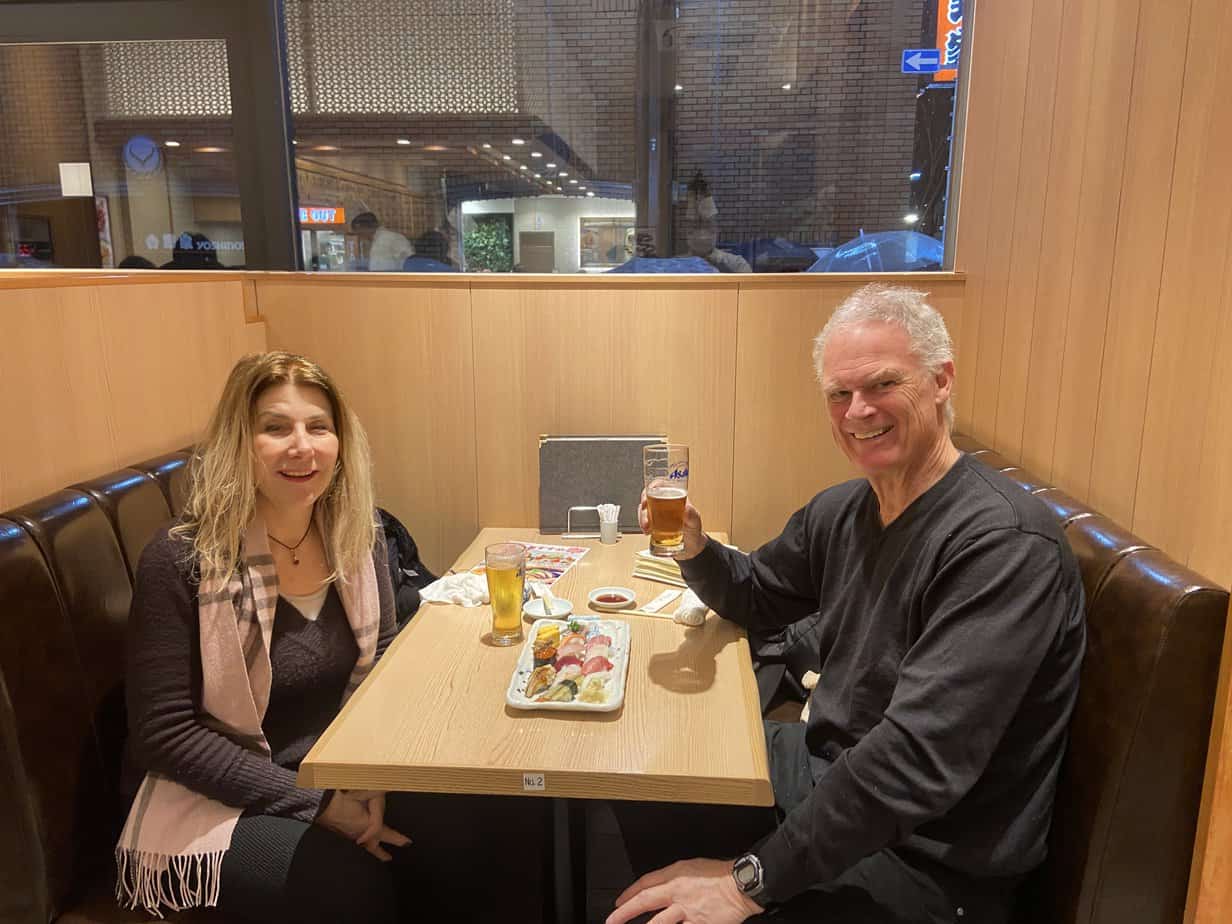
Japanese cuisine health benefits
One unsurprising observation was during our week in Japan, the only fat people Marina and I saw were Western tourists. All the Japanese were as lean as models. No wonder. We ate nothing but raw fish, grilled fish, noodles, rice, teriyaki chicken and vegetables.
The Japanese diet alone makes Japan a superior culture. You can look it up.
According to the United Nations, Japan’s average life expectancy of 84.95 years is third in the world behind Hong Kong’s 85.83 and Macao’s 85.51. (Get the picture?) The U.S., at 79.74, is 47th.
Japan’s obesity rate (considered a body mass index of at least 30 percent) is only 4.5 percent, 187th in the world. The U.S., is 13th at 47.7 percent, give or take a 2 a.m. dash to Denny’s or two. My adopted country, Italy, is, thankfully, 142nd at 10.4 percent.
In only six nights in Japan, I lost two kilos. I didn’t walk that much.
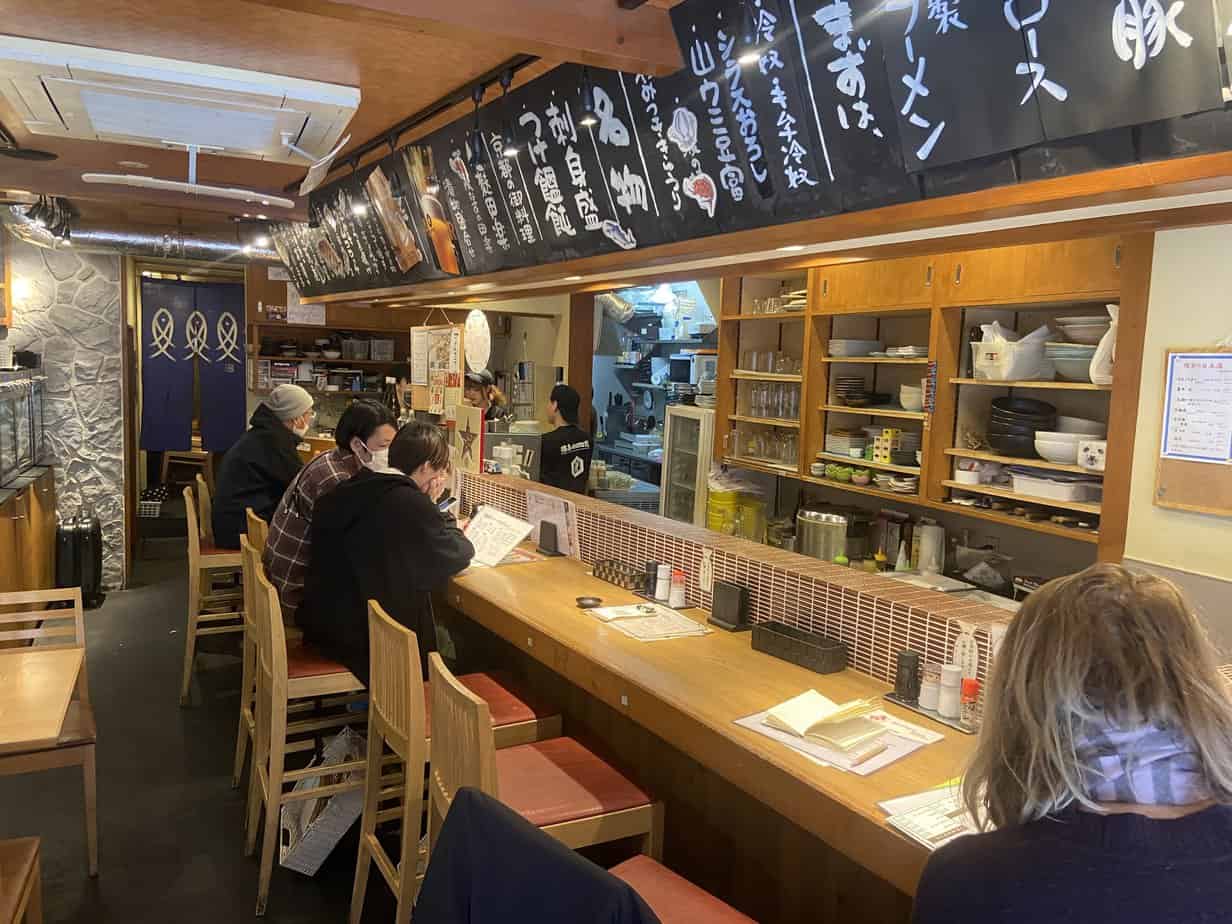
Dining in Japan is different not only with what you eat but where you eat. Japan has different eating establishments. You choose from:
Shokudo. These are small, casual diners usually consisting of a short, wooden counter where you sit and watch the cook prepare simple Japanese staples such as noodles and rice topped with a variety of foods ranging from eggs to vegetables to pork cutlet. They’re popular with overworked Japanese business people short on time.
Izakaya. Roughly translated to “drinking house,” these are the Japanese version of the Western pub. Go with friends and order a variety of dishes which you share between gulps of beer and/or sake. These are popular with students and young people unwinding from stressful day jobs.
Kissaten. This is the Japanese cafe where people meet for breakfast of a cup of joe with toast or hard-boiled egg. I read about the kissaten. I did not notice one. I did, however, see plenty of Starbucks. In lieu of our Kyoto hotel’s expensive breakfast buffet, I went, reluctantly, across the street to Seattle’s Best Coffee. Fine. I plead guilty. Seize my passport. Look, its tuna melt is good.
Kaiseki. This is high-end Japanese cuisine, often on set menus at high prices. These are fresh, seasonal ingredients served in small courses. Dishes range from sashimi (raw fish), grilled fish, soups, rice and a dessert. Meat is rare.
We avoided kaiseki. We stuck mostly with shokudo where we got more bang for our yen and liked the casual atmosphere where we could talk to our neighbors and cook just as easily.
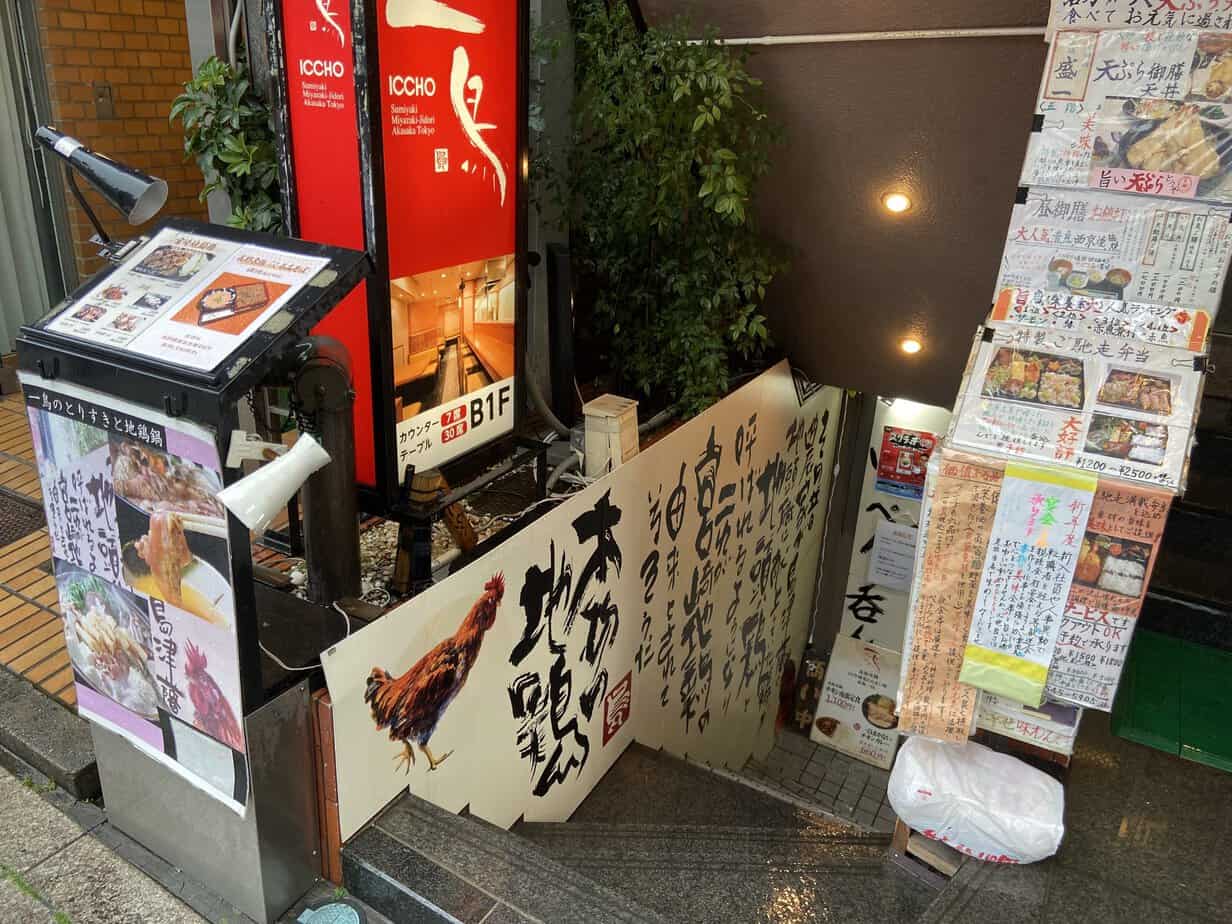
The restaurants
The late great Anthony Bourdain, famed chef and food author, once wrote, “If I were trapped in one city and had to eat one nation’s cuisine for the rest of my life, I would not mind eating Japanese.”
I get the appeal – especially if you’re a cat. Fish seems to be on every menu. It’s all very healthy and very fresh. Remember, Japan is an island. Nearly every city has a fresh fish market. And lots of healthy cats.
For an idea of what we ate, I’ll just take you along on our food tour, in chronological order, not counting Mimiu https://www.mimiu.co.jp/restaurant/kyoto_isetan/:
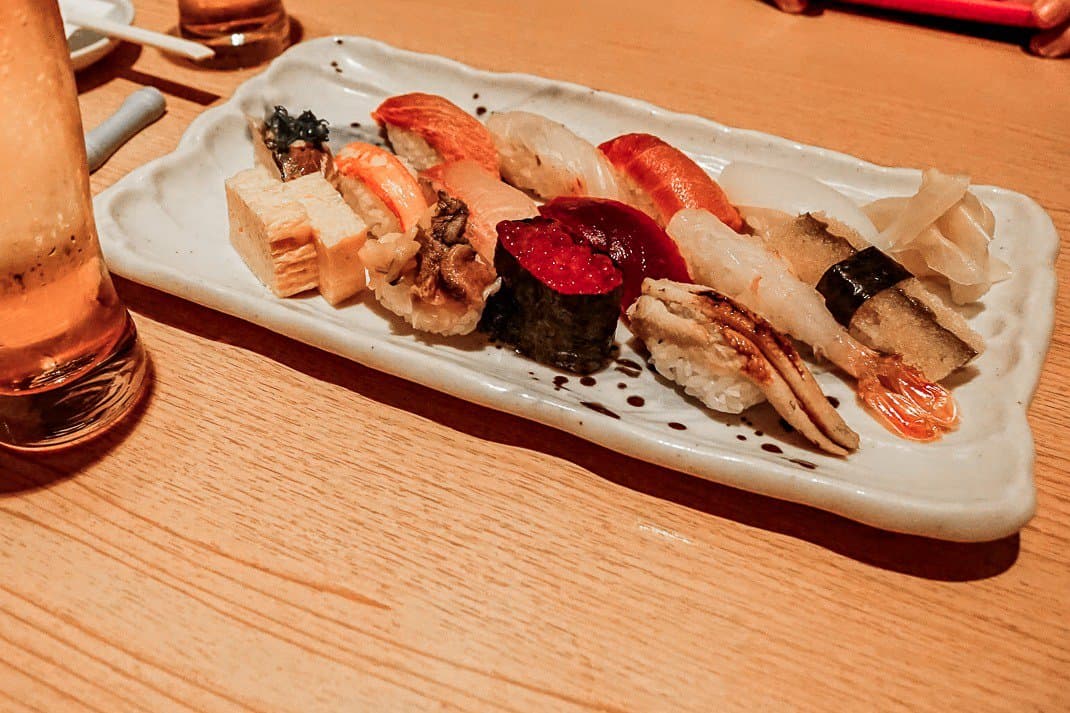
Tsukiji Sushiko, Kokusai Amano Building 1F, 3-13-6 Akasaka, Tokyo, 81-03-3583-8625, 11:30 a.m.-2 p.m., 5-10:30 p.m. Monday-Friday, 11:30 a.m.10:30 p.m. Saturday-Sunday. Our hotel’s Akasaka neighborhood fell between the Imperial Palace and the teeming night scene of Roppongi. Akasaka is the neighborhood tourists skip over so we knew our first Japanese meal would be authentic.
On a cold, windy, rainy, 43-degree night that permanently inverted my umbrella, Tsukiji Sushiko was a warm haven. We shook the rain off our clothes and inhaled the tantalizing aromas of fresh fish and soy sauce. A bevy of masked sushi chefs flew their knives around with precision as we waited on our 12-piece sushi plate.
Tuna. Eel. Salmon roe. Prawns. All but the roe on vinegar-laced rice that always gives sushi that tangy flavor. Cost for two: €40.
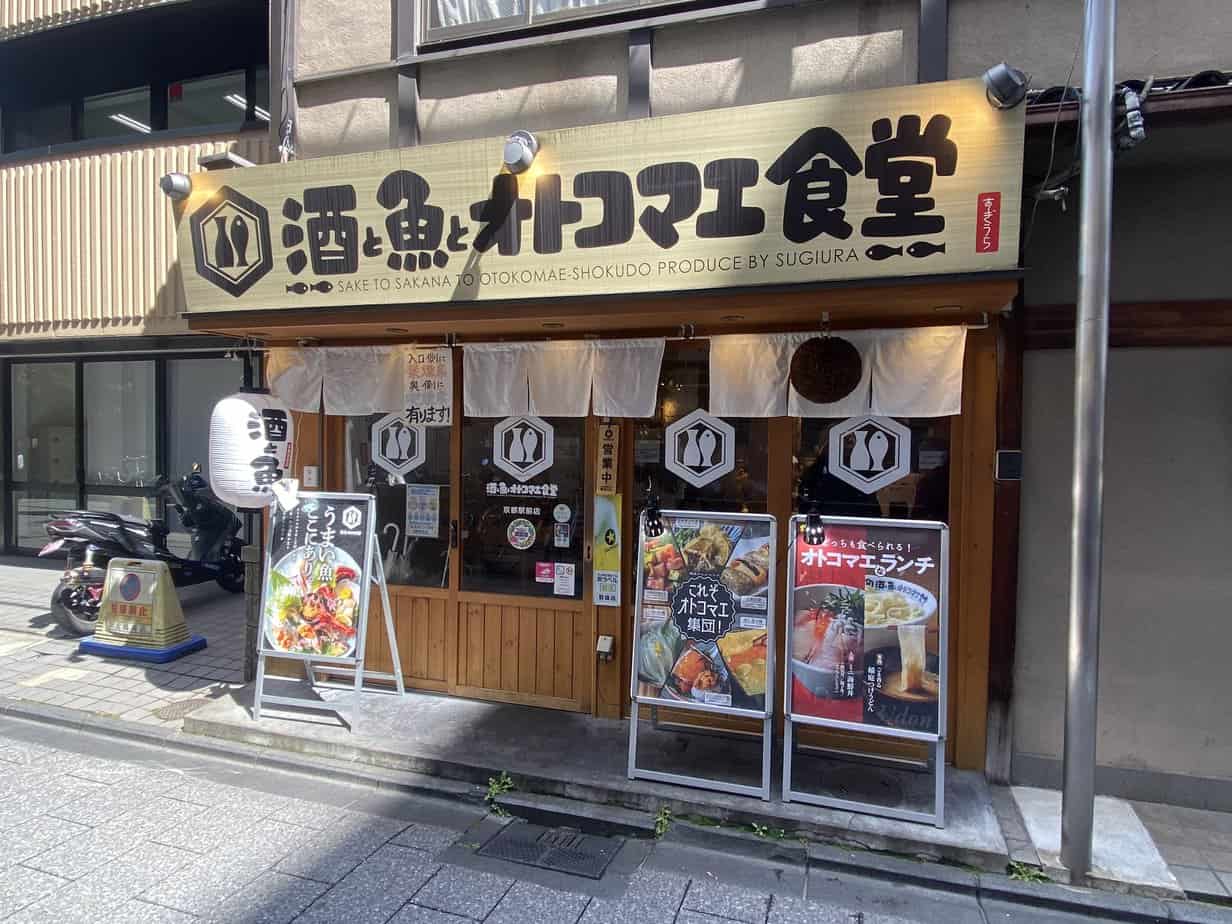
Sake to Sakana to Otokomae Shokudo, 576 Akezu Dori Shiokoji Agaru Higashi shiokojicho Shimogyo ku, Kyoto, 81-85-353-1555, 2:30 p.m.-midnight, https://otokomae-syokudou.jp/index.html. A typical shokudo and our go-to place near our Kyoto hotel. Menu items listed on wall in Japanese. Ordered seafood noodles soup and learned eating noodles with lacquered chopsticks is more difficult than the Japanese language.
Price for two: €21.
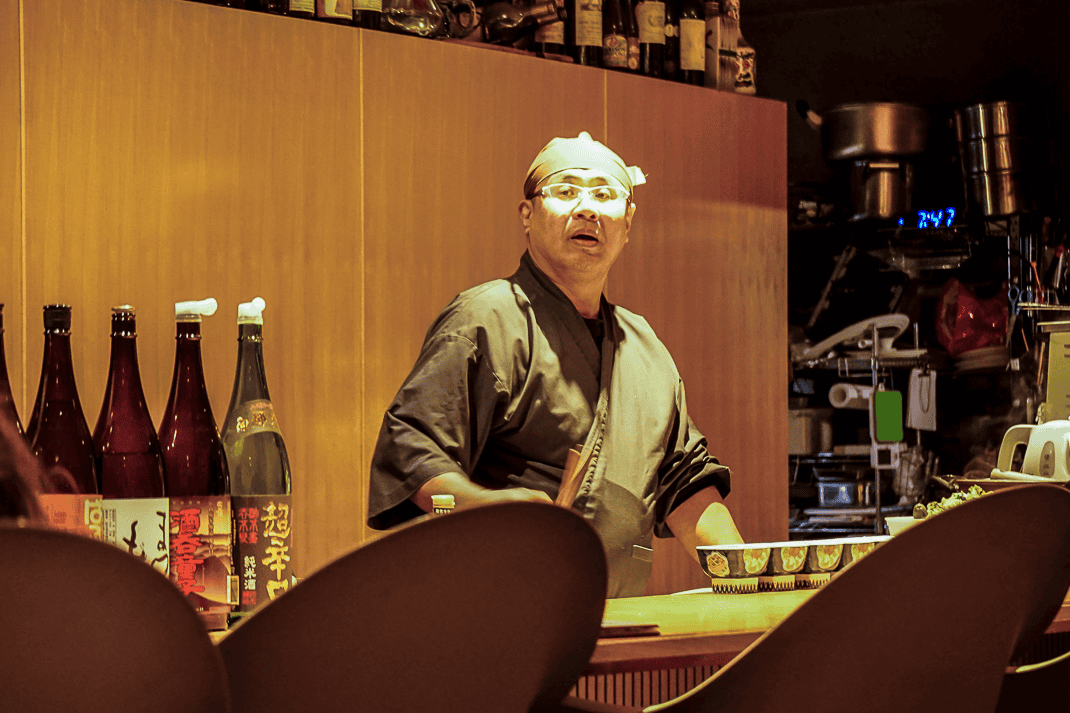
Gion Hyoatan, Gion Hanamikoji 4-Jo, Higashiyama-Ku, Kyoto, 81-75-525-1139, 6 p.m.-3 a.m., The Gion neighborhood is famous for its geishas who were common sites walking to and from work – until tourists’ harassment made the city close some of their common paths. Gion is also known for its great collection of restaurants.
They can be found down short, often dark, walkways on quiet side streets. Our first night in Kyoto we followed a sign to two doors, neither of which indicated a restaurant. I opened one, telling Marina, “I hope we’re not walking into someone’s home.”
We were walking into someone’s home. No tables. Just a living room. We quickly left and chose Door No. 2.
Gion Hyotan is a tiny shokudo where a burly cook stood behind a short counter in front of giant bottles of booze covered in Japanese characters. Tiny fish played in the bubbles of an aquarium. Japanese rock played on a loudspeaker. It was cold and the smiling owner pulled over a space heater for us.
He started us with a tuna and sea bream appetizer. My teriyaki chicken, one of my favorite dishes even in the U.S. with rice and plum wine were terrific. Price for two: €34.
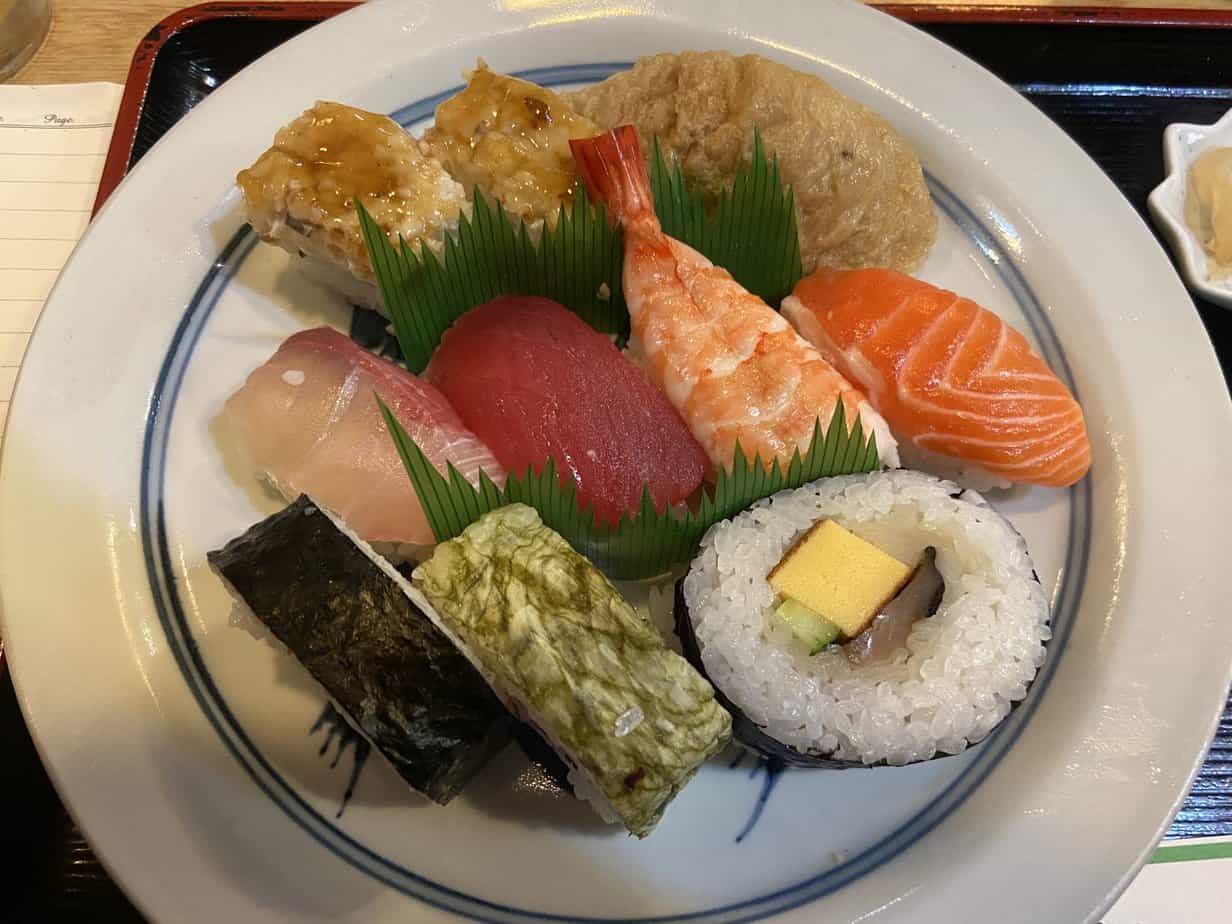
Izumatsu, 13-237 Honcho Higashiyama-Ku, Kyoto, 81-75-561-3551. We had just saved a lousy, claustrophobic experience at the tourist trap that is the Fujimi shrine by decompressing at the beautiful Tofuku-ji garden. The neighborhood of Tofuku, on the southern outskirts of Kyoto, is a quiet, little town void of the tourist shops we saw elsewhere around the city.
Izmatsu is a small, unassuming restaurant that looks like someone’s crowded living room with stacks of clothes on a couch next to dining tables. While bad Japanese TV played on an old set above us, we ordered assorted sushi: tuna, bream, shrimp, amberjack. Washed down with an Asahi beer, it was so filling we barely had room for dinner. Price for two: €24.
Touchi-Fuku, Kyoto, 55 Kameyacho, Sembondori Nakadachiuri Sagaru, Kamigyo-Ku, Kyoto, 11:30 a.m-3 p.m., 5-10 p.m. Thursday-Tuesday. Only seven tables in this place with two tables built low to the floor on tatami mats. White kabuki theater masks hung on the wall. White lanterns brightly illuminated the place like the Tokyo Dome.
For my birthday dinner, we had sobu noodles and tempura with green peppers. All excellent and, it turns out, we weren’t too full to finish. Price: €23.
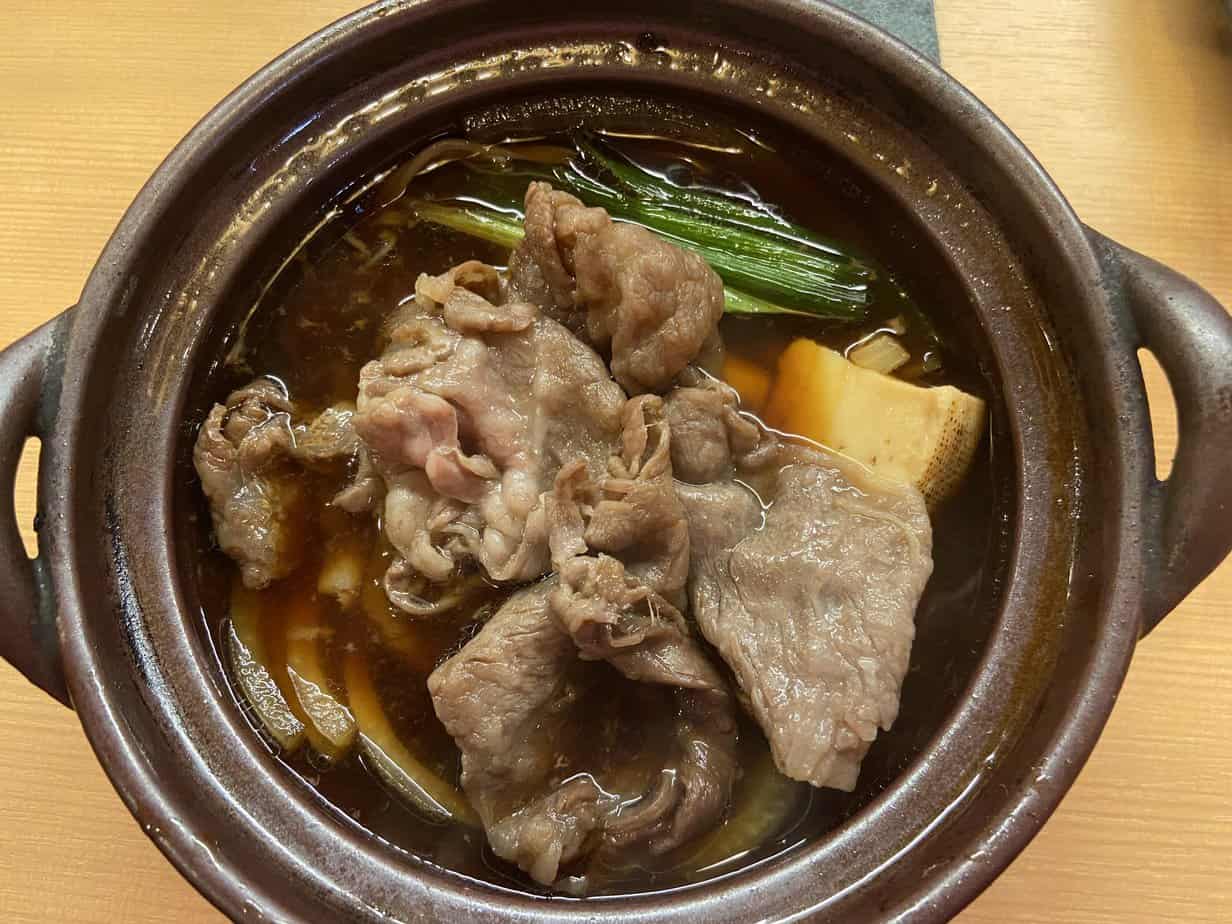
Kiharu, Kyoto, 595-2 Fujinishicho, Nakagyo-Ku, 81-75-708-2768. On our last night, we finished souvenir shopping with a meal downtown where the skyline doesn’t light up like Tokyo but it has every high-end shop you can find.
Kiharu is tiny. We found only four tables. Soft Japanese jazz filled the air. A French couple next to us recommended a glass of French red wine the restaurant oddly kept in the refrigerator.
We started with a mix of hors d’oeuvres, including tofu. I’ve hated tofu ever since I lived primarily off it as a budget backpacker in the late ‘70s. Comically called “boneless meat,” it’s a flavorless soybean byproduct that has basically the same texture and taste of a mattress found after a flood.
I had the wagyu beef, sukiyaki style, meaning served from a pot with multiple ingredients. Off two small grills, they served it as a big pile of beef in a brown, rich gravy along with a side of rice. Marina had salmon with butter and soy sauce. Price for two: €56.
As we left for Shanghai the next day, I complained to Marina that a week in Japan is just a tease. Or call it a taste. Yet a week of Japanese cuisine was taste enough for me. I couldn’t wait to hit China.
(Next Tuesday: 20 hours in Shanghai.)


April 16, 2024 @ 11:42 am
This was really funny and fun to read because I am on a 2 week holiday in Norway where all the food is cooked in butter and or cream, and in one week I gained 5 lbs! The fish is fresh and deliciously covered in cream sauces or sautéed in brown butter and I find myself craving a plate of pasta al pomodoro! LOL!
April 17, 2024 @ 6:14 pm
Ha! Wow! I remember the fish in Oslo as incredible but don’t remember the sauces. I remember they had good salads and a pretty good variety. Ah, go for a run along a fjord.
April 16, 2024 @ 4:19 pm
Now I’m hungry. That all looks and sounds fantastic. And much better birthday food than greasy chicken wings and cheap beer.
April 17, 2024 @ 6:12 pm
Thanks, Janet. Is that you had on your birthday? I learned it’s important to spend your birthday someplace memorable. Since moving to Rome I’ve had birthdays in Amalfi, Delhi, Sicily twice, Lisbon, Beirut, Molise, Istanbul and now Kyoto. I need a place special for my 70th in two years.
April 16, 2024 @ 5:52 pm
My mouth waters for all that delicious sushi accompanied by warm sake.
April 17, 2024 @ 6:09 pm
Thanks. It is good. The problem with saki is if it’s warm and cools off or on ice and becomes warm, it is God awful.